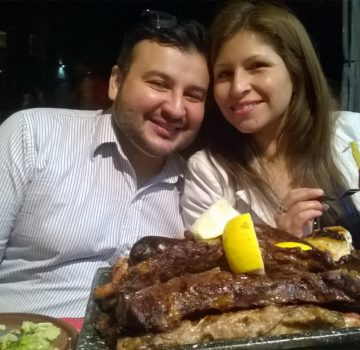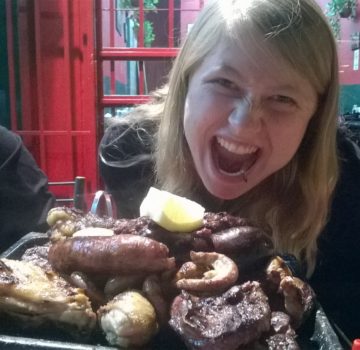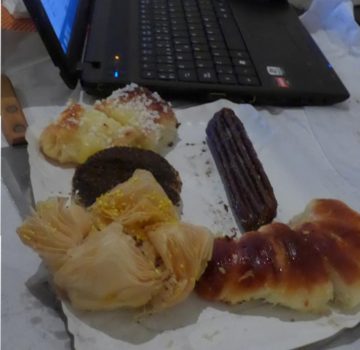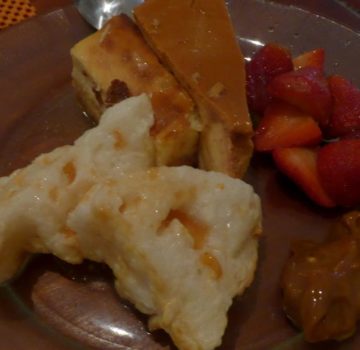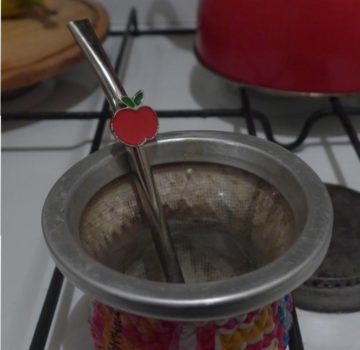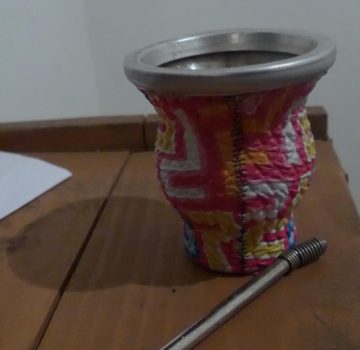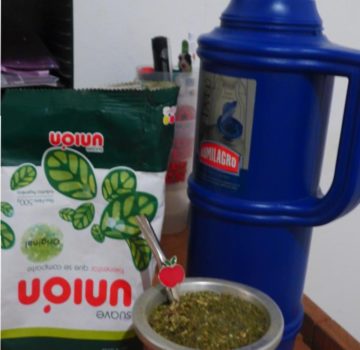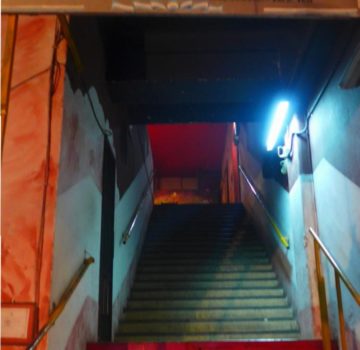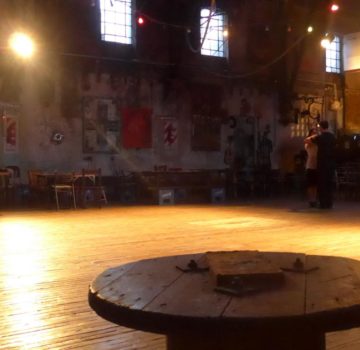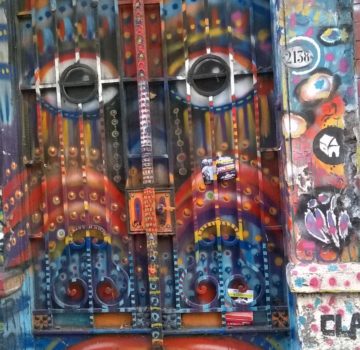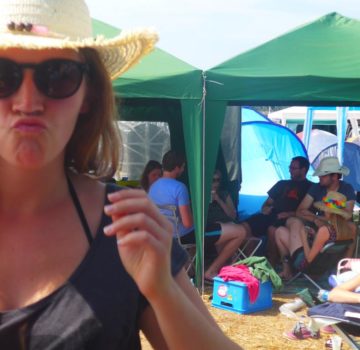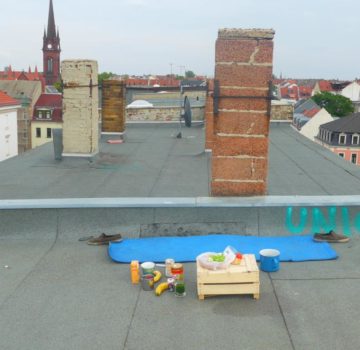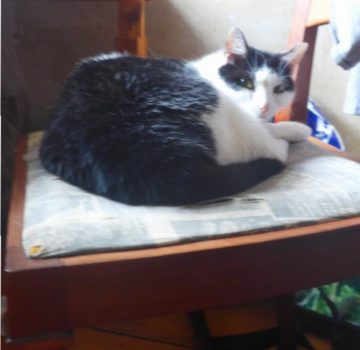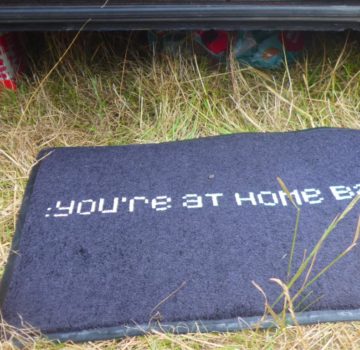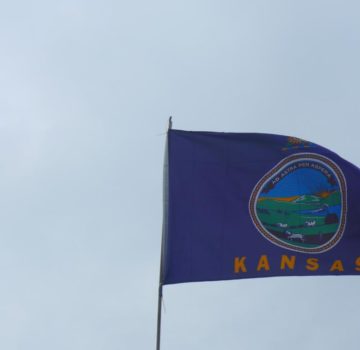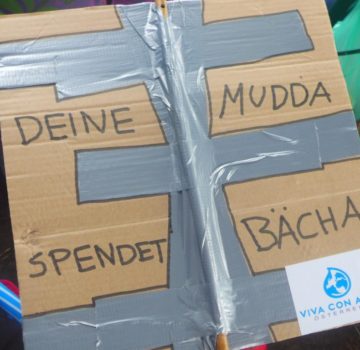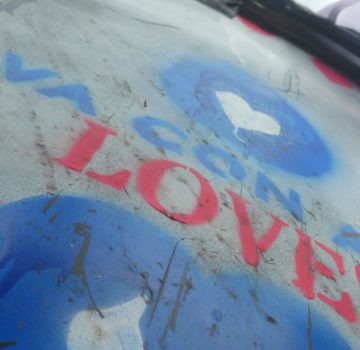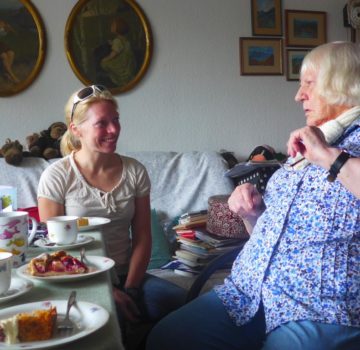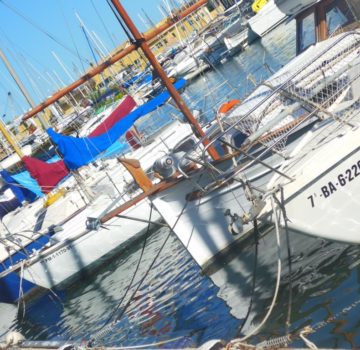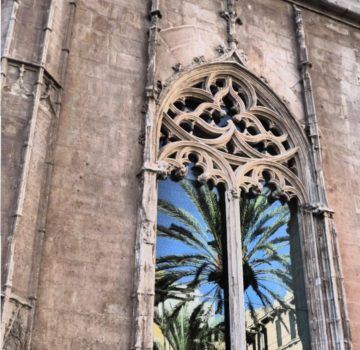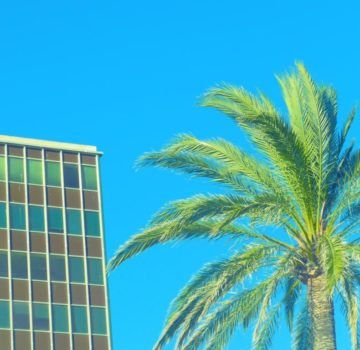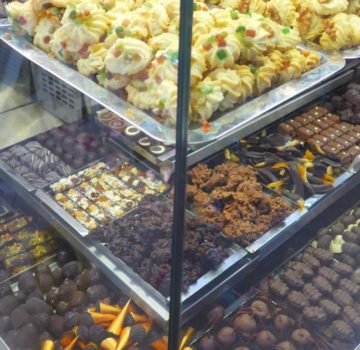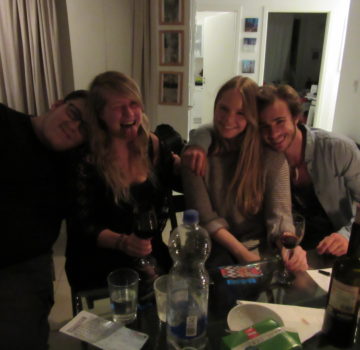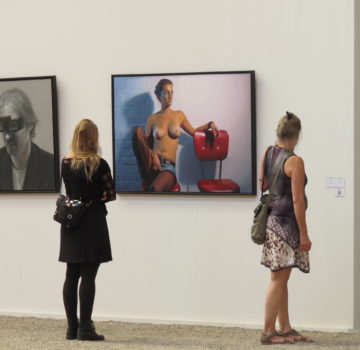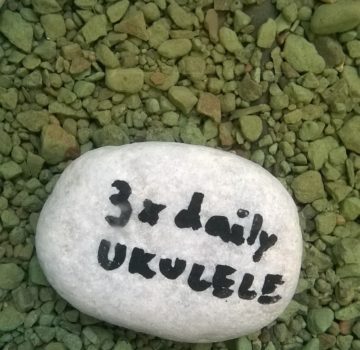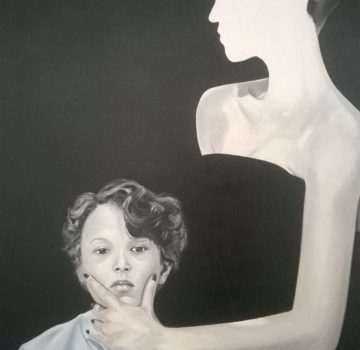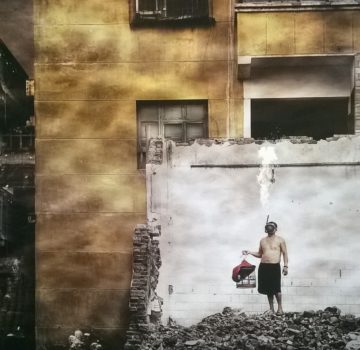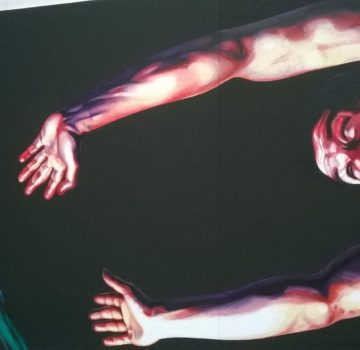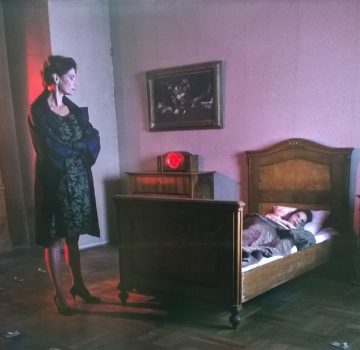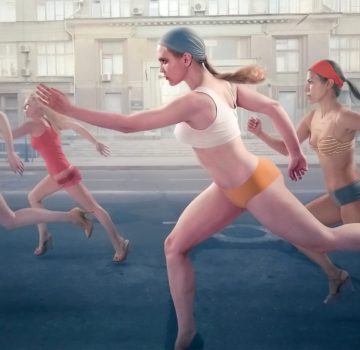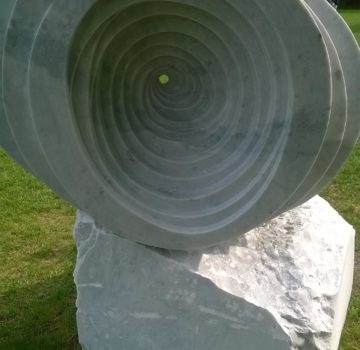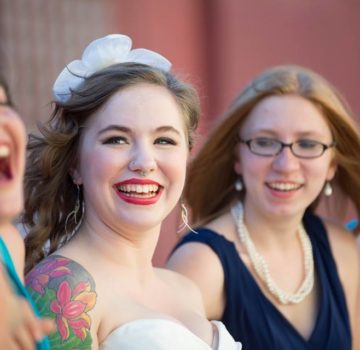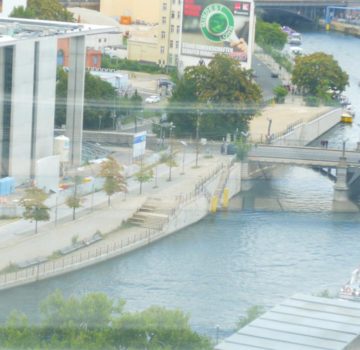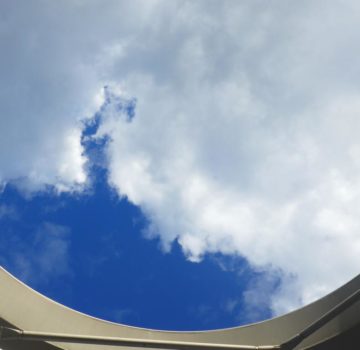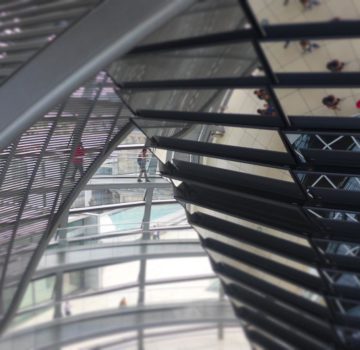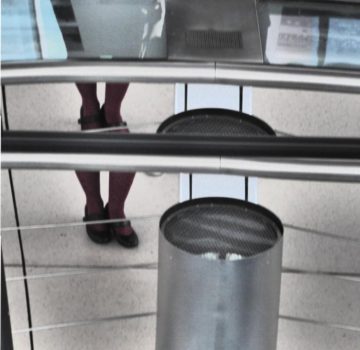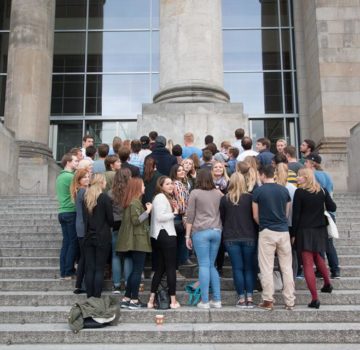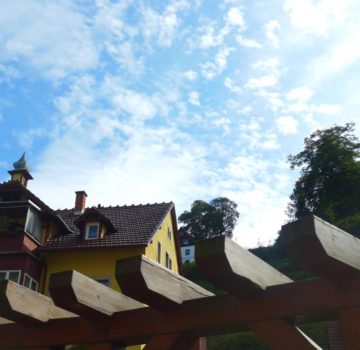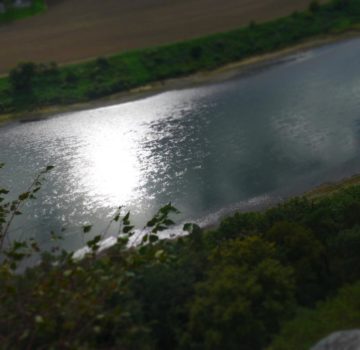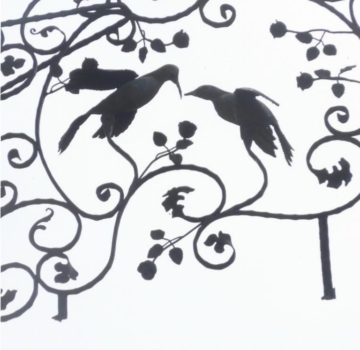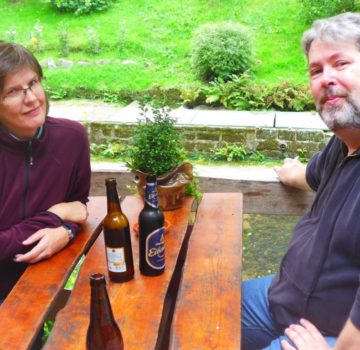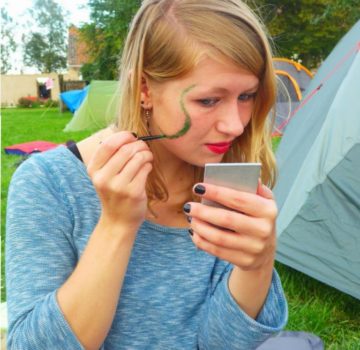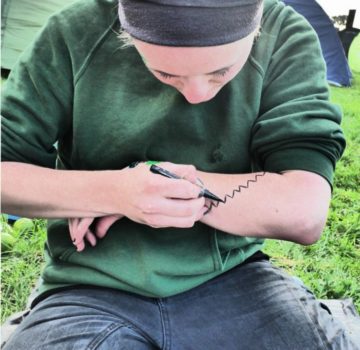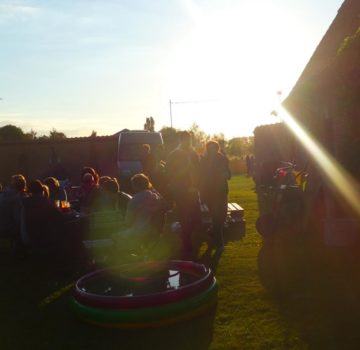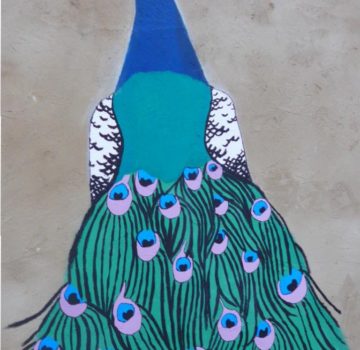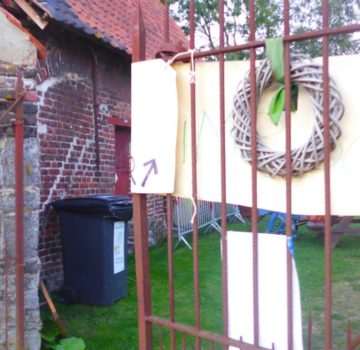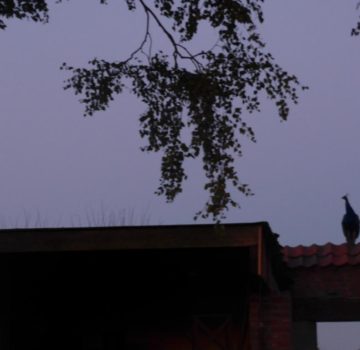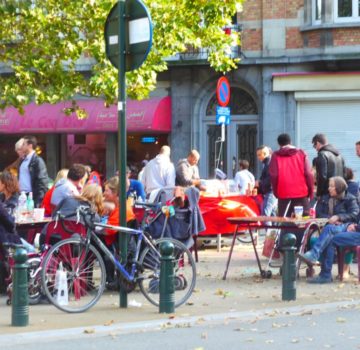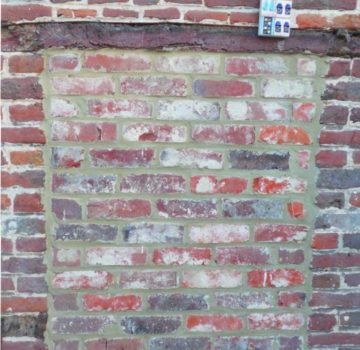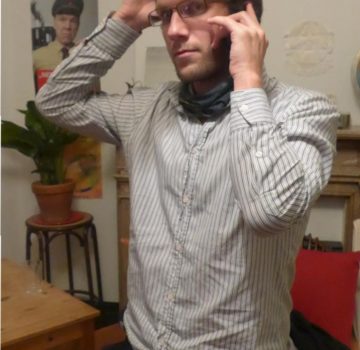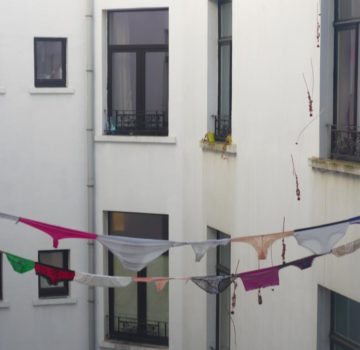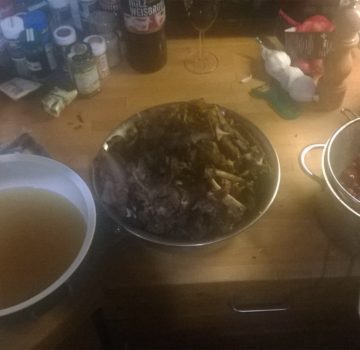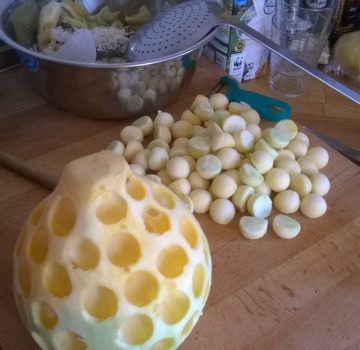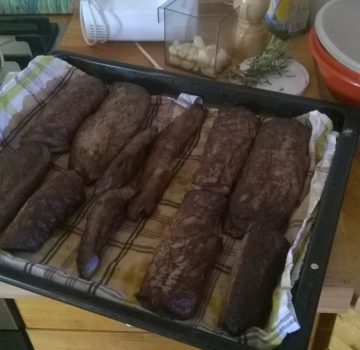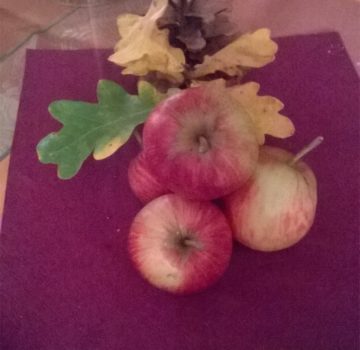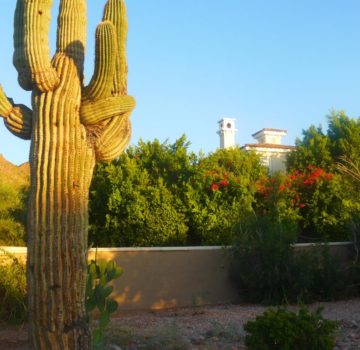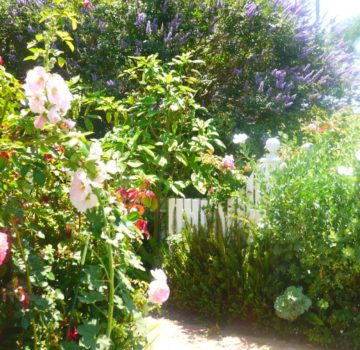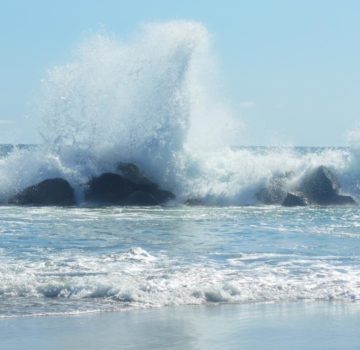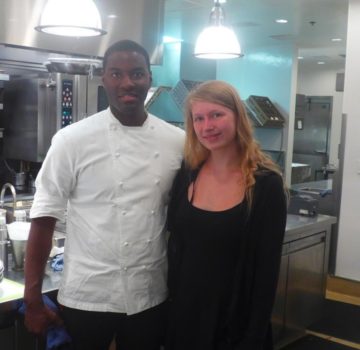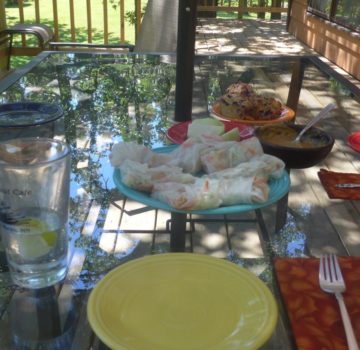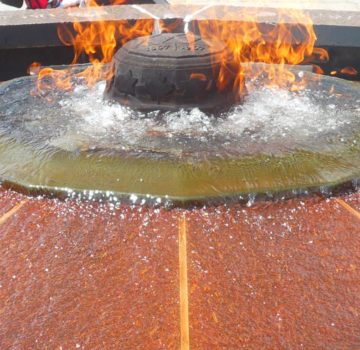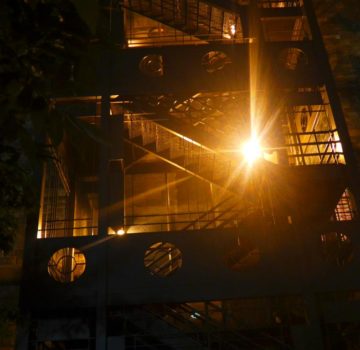
Essen
Posted by admin On Dezember 5, 2015
Essen.
Mein Lieblingsthema.
Also von vorne. Da hier viel Rind gezuechtet wird, ist es guenstig und wird sehr viel gegessen. Und ja, hier ist es fast noch schwieriger VegetarierIn zu sein, als in den USA.
Es gibt also viele Fleischspezialitaeten, zum Beispiel:
Food: my favorit thing in the world!
Good to know: Beef is the most common meat – cheap but still good quality – since there is so much cattle bred here. As worldwide known there are many specialities , mostly meat such as:
Parrilla:
Es bedeutet Grill. Somit ist fast alles „asado a la parrilla“ auf dem Grill geroestet, also gegrillt.Das ist dementsprechend keine Spezialitaet, sondern alles Folgende in irgendeiner Form.
It means grill or barbecue. „asado a la parilla“ would be roasted/cooked on the grill, so: to barbecue. Which means it is not a specialty – just the way how most specialties are prepared here.
Asado:
Das heisst einfach nur Braten/geschmort/geroestet und ist vor allem Schwein und Rind hier.
Means either to braise/roast or the roast. Usually used are beef and pork.
Tira de Asado:
Das heisst wortwoertlich Streifen vom Braten und ist gegrillte Quer-/Hochrippe (Rind), ein Streifen Fleisch, der relativ viel Fett enthaelt und den man in Deutschland eigentlich gar nicht verwendet, soweit ich weiss. Ausser fuer Saucen etc.
It translates more or less: Strip of the roast. What it really is is the a long strip cut from the ends the ripcage. A part that in germany and I think in the US isn’t really used either. Besides for sauce, broth, stock…
Chorizo:
Original aus Spanien/Portugal Paprikawuerstchen aus Schwein mit viel Knoblauch. Hier in Argentinien heisst das mehr so Bratwurst, enthaelt aber trotzdem auch mal Paprika und Gewuerze sowieso.
Originally from Spain/Portugal are those sausages with bellpepper and garlic usually made of pork. Here in Argentina though it basically means „Bratwurst“ so simply fried/grilled sausage. They don’t necessarily contain bellpepper but that doesn’t mean they don’t use many condiments.
Lomo:
Lende vom Rind. Somit Rinderfilet. Es wird hier oft als Steak gegrillt, so ist das meistens gemeint. Kann aber natuerlich auch geraeucherte Wurst sein.
Tenderloin (beef). Kind of Steak. It is often grilled thick round medallions/cotelettes sometimes wrapped in bacon. But of course it can also be meant as smoked cold cuts.
Morcilla:
Blutwurst. Wird hier sehr gerne so wie alles andere gegrillt.
Bloodsausages. Grilled like everything else.
Asaduras:
Innereien sind fuer die Leute sehr normal zu essen. Vor allem sehe ich hier Niere, Leber und fuer Deutschland eher untypisch: Magen.
Innards. A very normal thing to eat here, people aren’t as afraid of them as in germany or especially the USA. Most of all liver, kidney and for germany very untipical: stomach.
Milanesas:
Kein Bestandteil des Grillens. Es sind schlichtweg Schnitzel, allerdings oft gebacken (im Ofen) statt in der Pfanne gebraten oder frittiert und meistens Haehnchen, Kalb ist es in Deutschland original (mittlerweile oft Rind oder Schwein). Dabei wird hier Kalb glaube ich eigentlich gar nicht verwendet.
That’s what even in the USA is called Schnitzel. So it’s not grilled for once. It’s a little bit different though. In Germany Schnitzel is breaded (flour, egg, breadcrumbs) veal. Veal is (I think) never used here. The original is pan-fried. Nowadays pork and beef are used, too and it is often deep-fried because it’s quicker. Here it is usually chicken and I saw it baked in the oven more than anything else.
Empanadas:
Teigtaschen, entweder frittiert oder wie original gebacken, mit Eigelb bestrichen. Uebliche Fuellungen sind Carne, (womit eigentlich fast immer nur Rindfleisch gemeint ist), gehacktes gekochtes Ei und Paprika sowie Kaese und Schinken sowie Kaese und Zwiebel sowie Kaese und Mais sowie Gemuese sowie Haehnchen. Wobei die drei vegetarischen Varianten selbstverstaendlich eher selten zu haben sind.
Stuffed dough pockets. Or so. Usually brushed with eggwash and baked in the oven but sometimes deep-fried as well. The most common varieties are Carne (which means meat translated but mostly refers to beef) with chopped boiled eggs and bell-pepper; ham and cheese; onion and cheese; corn and cheese; vegetables or chicken. Of course you won’t always find those vegetarian kinds.
Pizza:
Ist hier fast schon Chicago-Style! Oft unglaublich dick, fast nur aus Kaese und Teig bestehend und dann eben vielleicht noch mit entsprechendem Fleisch oder Gemuese dazwischen ausgestattet.
Reminds me of Chicago deep-dish more than Italian. It’s a really thick dough and Pizza mostly cheese and a little bit of filling in between.
Puchero:
Uebersetzt: Eintopf. Wie in jedem Land enthaelt das arme Leute Essen namens Eintopf einfach alles, was es gab. Hier vor allem Kuerbis, Kartoffel, Suesskartoffel, alles moegliche vom Rind, Paprika, Karotten, Mangold und Eier. Je nachdem variiert der natuerlich auch nach Region, wie ueblich.
Translated: Stew. Just like in every other country it used to be poor people’s food with everything that grew around here and meat. Mostly used for this one are squash, sweet potatoes, beef of course, bell-peppers, carrots, swiss chard and boiled eggs. Of course there are plenty of variations.
Das ist nicht nur Luis und mit seines Partners (Danny) Schwester sondern auch Tira de Asado ganz vorne auf diesem schlechten Handybild zu sehen.
This isn’t only my friend Luis and his boyfriend’s sister but also Tira de Asado right in front to see in this very badly taken picture with my incredibly stupid phone.
Hier die bessere Seite des typischen Parrilla. Ganz vorne links einfach Haehnchen, quer ueber allem liegend Chorizo. Das Ohrfoermige oben drauf rechts ist Magen. Hinten rechts Blutwuerstchen und ganz schlecht zu erkennen vorne ganz rechts Leber
Typical Parrilla: right in front on ther very left just chicken. The sausage on top is Chorizo, the very dark little sausage in the back on the right is that bloodsausage. That thing that looks like an ear on top on the right is stomach and on the very right in front hardly recognizable: liver.
Fruehstueck gibts auch und somit ueberall Panaderias und Confiterias.
Es ist mehr so ueblich hier einen grossen Kaffee mit sehr viel Milch und Zucker zu fruehstuecken und dazu Weissbrot, Cracker oder Medialunas (Halbmonde, kleine Buttercroissants) in den Kaffee zu tauchen oder gleich reinzulegen. Ausserdem gibt es noch etliche weitere sehr leckere Konditoreiprodukte, genannt „facturas“ (Teilchen im Deutschen), zu denen auch „churros“ zaehlen, die hier allerdings gebacken werden, nicht frittiert. Ausserdem sind die relativ salzig und werden nur mit wenig Zucker bestreut. Ich esse sie sehr gerne in allen Varianten. Sehr gut auch mit Schokoladenueberzug und gefuellt mit Dulce de leche.
Breakfast here is very different from the USA or Germany and there are plenty of Panaderias (Bakeries) and Confiterias (don’t exist in the USA, little shops for tarts, pies, chocolates, all kinds of cookies and dough things, sweet and savory. Like an extended bakery).
Breakfast isn’t really a thing here and neither comparable with the huge German type of breakfast with juice, cold cuts a lot of cheeses, fruits, eggs, grapefruit, rolls and different types of bread, butter, curd, jam and so on nor the hot American one. It’s rather french in my experience and maybe similar in Portugal, Spain, Italy…
I don’t know exactly but here you just have a really huge strong coffee with a lot of milk and sugar. Just like with everything they have white bread, like soft baguette or cracker or Medialunas (half-moon is the name. Tiny delicious butter-croissants). They dip all of it into the coffee or sometimes just drown it in there.
Besides that there are plenty of other delicious things to buy in those confiterias, called „facturas“. The probaly most famous ones are Churros. Here again not deep-fried but baked in the oven and I think the dough is different here, too. They are slightly salty and don’t contain a lot of sugar. I love them very much and could eat them every day. Mostly you’ll get them plain with a little sugar on top, filled with Dulce de Leche or filled with Dulce de Leche and covered in chocolate.
Ein weiteres schreckliches Handybild. Klar zu erkennen das mit Dulce de Leche gefuellte Schokoladen-Churro hinten rechts. Vorne rechts ein medialuna de manteca. Also ein Buttercroissants, Medialunas sind deutlich weniger suess und kleiner und heller. Hinten links ein Pan dulce (suesses Broetchen) mit Pudding und Hagelzucker und vorne links ein Hojaldre con membrillo (Blaetterteig, aber frittiert mit Quittenfuellung).
Another terrible phonepic for you. In the back on the right a chocolate churro stuffed with dulce de leche. in front on the right a medialuna de manteca, a buttercroissant though medialunas are less sweet and thinner and lighter of color. In the back on the left a pan dulce (sweet roll) with pudding and sugar on top and in front on the left a deep-fried puff-pastry filled with quince.
Desserts und Dulce de leche:
Ich habe hier noch nicht einer Person getroffen, Tourist oder Einwohner, die nicht Dulce de leche, die Suesse der Milch, liebt. Es ist genaugenommen nur Milch und Zucker, evtl. Vanille, die ueber Stunden bei niedrige Hitze und staendigem Ruehren heruntergekocht wird. Dulce de leche dient als alles, Brotaufstrich, Eis, Sauce, Fuellung, Geschmacksrichtung. Sehr viele facturas (Teilchen) sind damit gefuellt. Bevor ich es vergesse zu erwaehnen, es wird auch ganz viel mit Quitte gearbeitet, nur, dass die hier schoener heisst: „membrillo“.
Am wichtigsten jedoch ist Dulce de leche im Zusammenhang mit Flan zu erwaehnen, ein pochierter Eierkuchen, wie Creme Moulee, mehr Eier und Milch statt Sahne. Eigentlich fast genau wie Creme Caramel.
Also Milch, viele Eier, Zucker, Vanille und dann einfach mixen, passieren, in ofenfeste Form geben, in Wasserbad bei ca. 180 Grad backen bis es wackelt, aber nicht mehr fliesst. Hihi. Abkuehlen lassen und stuerzen. Ublicherweise kocht man hier eben Zucker (Caramel) und giesst diesen zunaechst in die Flanform, sodass die Sauce sich ueber den Flan zieht, beim Stuerzen. Und das kriegt man hier fast ueberall zu essen, eben vor allem mit Dulce de leche.
Ebenso ueblich als Desserts sind „Budin de pan“ Brotpudding. Also Flan mit den alten Brot aufgeweicht und durchaus gerne auch mit Fruechten. Ebenfalls pochiert. „Isla flotante con sabayon“ schwebende Insel mit Sabyone. Das ist eigentlich ebenfalls pochiertes geschlagenes Eiweiss mit Zucker, auch oft mit Caramel drunter.
I am not lying when I say that I haven’t met any person yet, tourist or inhabitant – who doesn’t love Dulce de Leche, the sweet(ness) of milk. It is only milk, sugar, vanilla and nothing else. Those things are cooked down over hours on low heat. It needs to be watched and stirred. In the end you have a caramel-like golden-brownish cream. It is very delicious and a lot smoother than caramel/toffee. Here it is used for everything, as filling as sauce as icecream on bread and as flavor for many things. As mentioned many facturas are stuffed with it, too. Just as chocolate or tarts. Also seen often here is quince but it’s got a prettier name: membrillo.
You can’t talk about Dulce de Leche without mentioning Flan though. Flan is a poached eggpie very similar to creme moulee (more eggs, milk instead of cream) and basically the same as creme caramel.
So I kind of said it already: Milk, many eggs, sugar, vanilla all stirred and strained. Poured into your favorite ovenware and baked in a waterbath at 350 F until it wobbels but isn’t liquid anymore. Let cool down and turn over. Usually you cook caramel first and pour some into your ovenware first. That way the caramel will run over your Flan. This delicious desert has to be eaten with Dulce de Leche!
Just as common is „Budin de pan“ breadpudding. It is like breadpudding. Haha. It exists to use up all the old and dry white bread leftovers. Those are mixed with milk, eggs, sugar, vanilla and often fruits. Poached the same way and turned over. „Isla flotante con sabayon“ is the floating island with Sabayone. It is beaten eggwhites with sugar. Nothing more. Also poached. Sabayon consists of only yolks beaten in a bowl over water steam with sugar, flavors if wanted and white whine. it becomes a fluffy airy delicious sauce which goes great with the other part of the egg.
Also noch ein furchtbares Bild, diesmal mit Erdbeeren. Und links daneben Flan, der fast genauso aussieht wie der Kaesekuchen nochmal links daneben. Der weisse Haufen ist natuerlich Isla Flotante und vorne rechts das Zeuch ist natuerlich Dulce de Leche.
In this third very terrible picture you see strawberries. And also Flan right in the middle next to them. It looks nearly like the cheesecake on the left of the Flan. The white pile is the Isla Flotante but without Sabayon just with caramel. And the cream on the right is Dulce de Leche of course!
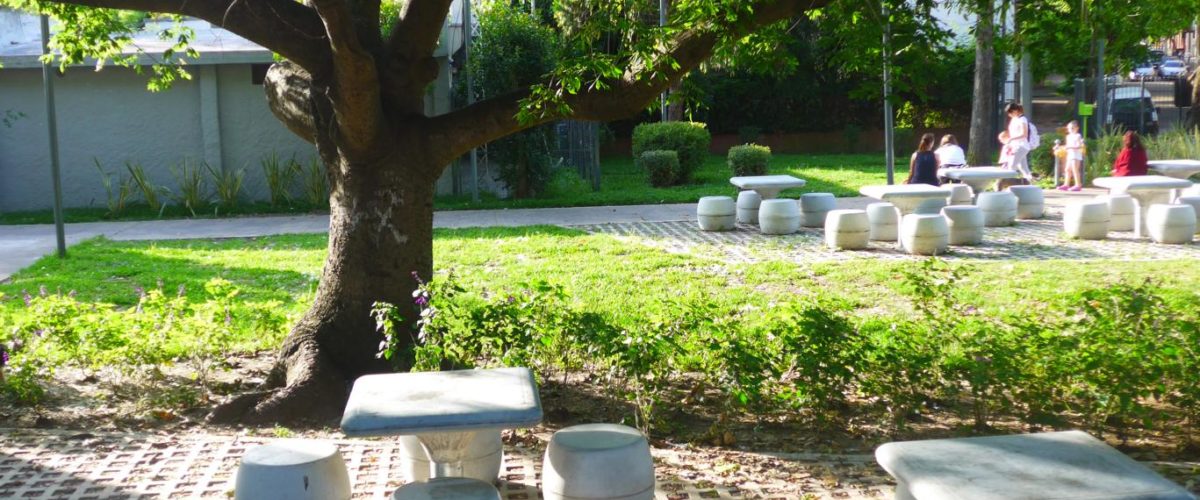
Tangowerbung und die Mate-Religion des Graffitiwetters
Posted by admin On Dezember 5, 2015
Mate
Yerba Mate ist ein Getraenk, dass ich hier fast den ganzen Tag lang trinke. Es hat nichts mit Club Mate zu tun, wie vermutlich jeder weiss. Es sind lose grobe Blaetter, die mit ca. 80 Grad C heissem Wasser aufgegossen werden (wie gruener Tee) in eine Matetasse, in der sich ein metallener Strohhalm mit integriertem Sieb befindet. Die Tasse ist meist aus Holz und silbern angemalt und weniger oft aus Plastik. Natuerlich gibt es sie in vielen Formen, Farben, Mustern und Preisen.
Man fuellt die Tasse fast komplett mit Yerba und dann mit dem Wasser. Man trinkt sofort aus (ist ja auch nicht viel) und reicht die Tasse zurueck zum Gastgeber. Das ist gerade mal 1-3 mal am Halm ziehen.
Mate ist ein unglaublich soziales Getraenk. Natuerlich trinkt man auch alleine, aber vor allem in Gesellschaft. Es ist Tradition, dass der man trinkt und den Tee zum Gastgeber zurueckreicht, der das Wasser eingiesst und dem Naechsten weitergibt. So wird die Tasse in der Runde herumgegeben. Es gibt noch deutlich mehr Traditionen, die ich nicht kenne.
Manche trinken Mate mit Zucker, mit Zeste, mit Kraeutern & Gewuerzen. Im Sommer und anderen Laendern wird er auch gerne kalt mit Orangensaft getrunken. Die Blaetter und die Art zu trinken unterscheiden sich nach Land ebenfalls und Mate wird auch nicht in ganz Lateinamerika getrunken.
Wir trinken Mate beim arbeiten, beim „Kaffeeklatsch“, beim Musik hoeren… also eigentlich immer. Es haben auch sehr viele Leute grundsaetzlich eine Thermoskanne (aus Plastik), Yerba und Tasse dabei.
Angeblich moegen viele Touristen Mate ueberhaupt nicht gern. Ich weiss nicht, ob das stimmt, aber fuer mich ersetzt der Tee fast komplett den Kaffee.
Tango & Salsa
Salsa wird hier tatsaechlich sehr viel getanzt. Clubs sind hier Boliches, in denen „Cumbia“ laeuft. Also nicht ausschliesslich, aber oft. Cumbia ist in Wirklichkeit eine colombianische Musikrichtung plus Tanz mit afrikanischen Einfluessen, aber hier ist damit immer eben diese allgemein „lateinamerikanische“ Musik gemeint, zu der man Salsa, Merengue, Bachata, Regueton und bestimmt noch mehr tanzt (zum Beispiel Cumbia :P).
Colombianer zaehlen auch als mit Abstand die besten Taenzer hier, waehrend sich die Argentinier hier meiner Erfahrung nach gerne schlechtreden. Dabei tanzen hier natuerlich alle gut im Vergleich zu in Deutschland.
Tango hingegen ist anders. Sowohl Tanz als auch Musik zaehlen als veraltet und unmodern. Die meisten Leute, die hier Tango tanzen/lernen wollen, sind Touristen. Dennoch gibt es viele Menschen, die gerne Tango hoeren (vor allem) – ich hoere ja auch gerne Klassik. Ich habe noch nicht einen Menschen kennengelernt, der allerdings Tango tanzen kann und von hier ist – ausser in einer Milonga. Das ist eben ein Ort an dem Tango (Musik) laeuft, live oder nicht, und getanzt wird. Die meisten Milongas sind wenige Tage die Woche geoeffnet, aber dann tanzt man die ganze Nacht.
Man kann alles kriegen von guenstigen Anfaengerstunden in Gruppen bis zu unglaublich teuren Einzelstunden. Und ja, ich will auch. Leider habe ich frueher in der Tanzschule sehr wenig Tango getanzt, die europaeischen Taenzen waren da durchaus eher der Schwerpunkt, aber das hat mich auch dann schon traurig gemacht. Ich wuerde unglaublich gerne Einzelstunden nehmen und wenn ich das kann, mache ich das auch bald.
Nur im Falle, dass jemand keine Ahnung hat, wie sich gesungener Tango anhoeren soll: Der wohl bekannteste Saenger ist Carlos Gardel und eines der bekanntesten Lieder „Por una cabeza“. Aber natuerlich unterscheiden sich Themen und Ausuebung dieses Gesanges genauso wie in jedem anderen Genre.
Werbung
Fuer mich ganz komisch zu sehen: Europa ist ein grosses Vorbild fuer Viele. Es scheint supertoll zu sein, einmal in Berlin gewesen zu sein oder den Eiffelturm gesehen zu haben, aber direkt neben den Ruinen der Inka gestanden zu haben, ist kaum bemerkenswert.
Das schlaegt sich auch auf viele Gespraeche nieder, in denen es einigen Leuten wichtig ist, zu erwaehnen, dass sie irgendwo eine Verwandte Person in Europa haben.
Ausserdem ist viel Werbung hier voellig verrueckt. Sehr sehr viel Werbung enthaelt blonde, blasse Frauen mit europaeischem Gesichtsschnitt – als waere sie im falschen Land aufgehaengt worden. Auch nahezu jeder bekannte (weibliche) Star hat blondgefaerbte Haare.
Es fuehlt sich an, als wuerde irgendjemand versuchen, die Leute zu verarschen. Als waere die ganze Werbung fuer einen anderen Kontinent.
Ich habe manchmal das Gefuehl, von irgendwo wird den Leuten erzaehlt, es waere schlecht eine argentinische oder lateinamerikanische Kultur/Herkunft zu haben und man muesse sich davon abheben. Ich frage mich, ob das eine richtige Einschaetzung ist, oder ob das Mehreren auffaellt.
Apropos: Blond sein ist hier ungeahnt anstrengend. Auch wenn das nach Viertel und Uhrzeit variiert, faellt man ueberall und immer auf. Viele schaetzen gleich, dass ich aus Deutschland bin, zweite Wahl Schweden. Man bekommt alles moegliche hinterhergerufen, am Einfallslosesten dabei: „rubia“ (Blondine). Obwohl sich auch viele Frauen hier die Haare blond faerben, sehen alle sofort den Unterschied.
Truco
Es ist ein sehr verbreitetes Kartenspiel, dass ich oft alte Matetrinkende Maenner auf den Tischen, die in den Parks stehen (Beitragsbild) spielen sehe. Es ist wohl kompliziert, also vielleicht ein Doppelkopfersatz? Ich hoffe ich lerne das bald!
Graffiti
Gibt es hier ganz viele und sehr schoene davon. Und wohl auch Touren, allerdings nur am Wochenende, weshalb ich nicht dazu kam. Ich hoffe, ich schaffe es mal einen ganzen Tag nur herumzulaufen und Graffitis oder man koennte fast schon Wandmalereien sagen, zu photographieren. Ein paar sieht man in der Bildergallerie, wobei die fast alles von nur einer Grundschule sind, welche hier grundsaetzlich auf diese Weise verschoenert werden.
Religion
Obwohl es ein sehr christliches und auch noch katholisches Land ist, ist mir bis auf staendigen Bekreuzigungen in Bussen, ohne ersichtlichen Anlass von Menschen jeden Alters, religioesen Symbolen auch an Schulen und positiven sowie sehr negativen Ausrufen, nichts weiter aufgefallen. Keiner mit dem ich bis jetzt geredet habe, hat Religion als ein wichtiger Teil seines Lebens erachtet und die mit denen ich nicht darueber geredet habe, bauen es zumindest bis jetzt nie in eine Unterhaltung mit ein.
Also auch wieder ein riesiger Unterschied zu den USA.
Wetter
Hier ist ja gerade Fruehling und es sind immer so 20-30 Grad. Aber manchmal regnet es. Das ist auch weiter nicht schlimm, nur wenn es regnet, dann immer gaaaanz viel auf einmal. Und weil hier irgendwie nicht so ein richtiges System fuer Wasser zum Ablaufen exisitert, fliesst dass dann in rauen Menschen die Strassen und Wege herunter. Eine Kollegin wohnt weit weg und wenn es dort derart regnet, kann sie nicht zur Arbeit kommen, weil dann immer die Strasse komplett ueberschwemmt ist.
Das Wasser wird auch echt schnell, ganz schoen beeindruckend.
Mate
Yerba Mate is a beverage that I drink all day long. It is nothing like the german Hipster-Soda and consists of large broken leaves (Yerba). You pour hot water (175 F just like for green tea) over those lose leaves that are nearly filling up the mate cup. In that cup is a straw with integrated strainer at the bottomend. Mate cups are usually made of wood and often painted silver but sometimes made of plastic as well. There are many variaties of color, shape, pattern and price.
Once you poured the water you immediately drink the tea. It only takes a few sips to empty the cup. Drinking Mate is rather social. People do drink it alone as well but mostly in groups. There are many traditions around Mate, one of them is that the host pours the water. You finish your Mate and pass it back to the host who fills it up again and hands it to the next person in a round.
Some people like Mate with sugar some with lemon or orange peel. Some with herbs or condiments or everything together. I like it pure.
How the leaves are cut and how you drink the tea is diferent in all the countries that have Mate (which are by far not all in Latin America). In sommer people like replace the hot water with cold orange juice or lemon pop.
You drink Mater with friends, at work, with pastries or while listening to music. So to say all the time. In the city you can ovserve that many people carry a Mate cup and straw, plastic thermos jug and Yerba with them all the time to enjoy it everywhere.
I heard that most of all tourists wouldn’t like it at all. I don’t know if that’s true – certainly not for me. I hardly drink any coffee anymore.
Tango & Salsa
Salsa is indeed danced a lot here. In so called Boliches which are Clubs. The type of music is called Cumbia even though in reality it’s a dance and certain type of music on it’s own, originated in Colombia with african influence. But if someone says Cumbia here he/she probalby refers to every type of latinamerican music that you can dance either Salsa, Merengue, Bachata, Regueton or even Cumbia to :P …
Colombians count as fenomenals dancers here – the best – while the Argentinians I talked to really think here nobody can really dance. I think it’s a lie and in comparison to germany everybody can dance amazingly good anyway.
Tango is different though. The dance and music count as oldfashioned. I didn’t meet any Argentinian who just dances Tango – besides the few I met while dancing. Therefore are most people who take lessons to learn Tango tourists. I did meet people that like to listen to it more often but I think that’s just like I like classic music.
Milonga is the name for a Tangobar. People dance all night long and at times the Tangomusic is played live.
Lessons can be for beginners in groups or single and per hour. So they can start at 7 Dollar per hour and go up really high.
I really would like to take lessons myself since I loved this dance even when I was dancing many years ago. Unfortunately Tango wasn’t touched very much but I enjoyed it very much. I hope I can do that soon.
Just in case anyone really has no idea how Tango sounds like and wants to know:
The most famous singer is Carlos Gardel and his most famous song is „por una cabeza“ also known from the movie True Lies. Just like in any other genre tango can sound very different so keep in mind how old this one is.
Advertisement
It is extremely odd for me to see ads here. Europe seems to be the big ideal.
Having been to Berlin or seen the Eiffel-tower is a big deal but standing right next to Machu Picchu in comparison seems to be nearly dull.
Also people are proud of telling you that they have a relative living somewhere in Europe or coming from there. Even though they might have relatives also from other Latinamerican countries.
Furthermore you can see weird stuff on those posters and walls: a lot of white, blond, european looking women. What are they doing there? Should only tourists buy their products? Only tourists from Europe? It gives me the feeling as if someone tried to be kidding. This seems to be advertisement for another continent.
Sometimes get the idea that someone tries to tell Latinamericans/Argentines that it woulud be a bad thing to be from here or at least a better thing not to be.
I wonder if I am just crazy or if maybe other people noticed as well…
Talking about that I would like to mention how exhausting it is to be blond here. The level of annoyingness depends on district and time of the day but in any case – I attract attention.
Most people guess that I am from Germany sometimes from Sweden and is important for them to talk to me because of that. People (men) yell all kinds of stuff even if it is as uninspired as :rubia! (blonde). Many women dy their hair blond but still I look just different.
Truco
That is a very common cardgame which I only see played by old man while drinking Mate. There are stonetables in parks just as you can see in the picture to that post. I heard it’s complicated so I am eager to learn the rules hopefully soon! Could replace my addiction to Doppelkopf (German cardgame).
Graffitis
There are a lot. And the look really beautiful. A lot are rather painted. There are guided tours for graffitis but I couldn’t make it yet since they are happening on weekends. I want to take a day just to walk around and take pictures of as many as possible. In my photogallery you can see the very few pictures that I already took though they are mostly from only one elementary school. Those are always painted very beautifully here.
Religion
Even though the majority are christians (even catholics) here I didn’t notice much of it. No more than random crucifictions in busses or on the street by people of all age, religios symbols and some negative just as positive phrases. Nobody I talked to stated that religion would have an important impact on his or her life and the ones that didn’t directly say that also never made it part of a conversation.
What a big difference to the USA!
Weather
It’s spring, sun is shining. We have wonderful 70 to 90 F here and summer is coming soon. But sometimes it rains. And when it rains it always rains a lot. And since there doesn’t seem to be a system to lead the pouring water somewhere else, there is no place else but the streets and walkways themselves. One workmate lives in an area where everything gets flooded with rain so that she can’t leave the house at those days.
Therefore now I know how stunningly fast so little amounts of water can get.

Finally
Posted by admin On Dezember 2, 2015
Also tatsaechlich schaffe ich es nun und sitze hier in gerade, um den Blog ein wenig zu vervollstaendigen… ja, genau. Ich bin hier schon seit ca. 1,5 Monaten und ich sehe ein, es wird Zeit!
Ich befinde mich in Buenos Aires und betreibe fleissig Couchsurfing. Ich hatte zwei hervorragende Hosts fuer so 3-4 Wochen und befinde mich seitdem bei der wunderbaren Florencia. Sie hat auch eine Katze (Ella Fitzgerald), wie gut!
Stadt
Buenos Aires ist eine Stadt, die riesig sein muesste, so ca. 3 Mio Einwohner hat, mit Gran Buenos Aires (Ring) allerdings eher 13 Mio.
Die Provinz Buenos Aires hat etwas ueber 16 Mio Einwohner und ganz Argentinien hat ca. 43 Mio. Im Vergleich wohnt also etwa ein Drittel aller Bewohner dieses riiiiiesigen Landes in Buenos Aires (Provinz). Das Bedeutet, es ist unglaublich leer. Ausser hier, hier ist alles. Irgendwo kommt es mir allerdings gar nicht so unglaublich gross vor, was vermutlich damit zusammenhaengt, dass die Flaeche sehr viel kleiner ist als die Berlins zum Beispiel ( ca. 200 zu 890 qkm) und ich ziemlich viel laufe. Dafuer ist die Einwohnerzahl aehnlich und damit kommt dann auch das Leben zustande. Allerdings nicht so sehr die Hektik. Die Menschen hier laufen gerne gemuetlich und puenktlich sein ist nicht ganz so wichtig, schon weil das ja mit den Bussen auch fast unmoeglich einzuplanen ist.
Ich vergleiche mit der Kultur sehr gerne die Sprache und finde Definitionen sehr interessant in dem Zusammenhang. So zum Beispiel das Wort „jetzt“, was unmittelbar bedeutet, im Vergleich zu „now“ was demnaechst, aber zuegig bedeutet, im Vergleich zu „ahora“, was durchaus in 5 – 30 Minuten sein kann. Das ist meine Einschaetzung, bitte keine Statistiken damit erheben. Davon gibt es sicher irgendwann noch mehr!
Leben
Buenos Aires ist die Stadt die nicht schlaeft, so wie New York – nur, dass es hier zutrifft. Man kann tatsaechlich jeden Tag der Woche ununterbrochen ausgehen, wenn man das moechte und es ist immer viel los, unabhaengig von Touristen. Auch in allen nur erdenklichen Bereichen, Kumbia, Blues, Tango, Kulturelle Zentren & Veranstaltulngen, Theater, Kunst, diese Stadt hat wirklich sehr viel zu bieten. Man geht hier allerdings auch nicht vor ein Uhr nachts Tanzen und gegessen wird hier ja auch normalerweise zwischen 21 und 23 Uhr. Viele Leute aus ganz Lateinamerika kommen hierher um zu studieren, da die Uni einen sehr guten Ruf hat und frei ist.
Es ist schon merkwuerdig wie man sich in einem fremden Land so wohl fuehlen kann. Mein Castellano ist zwar vorhanden, aber nach wie vor ziemlich erbaermlich. Dennoch ist es sehr schoen zu merken, dass man doch schnell in etwas Fortschritte machen kann.
Leider kann man eines ueber Buenos Aires nicht sagen, naemlich dass es guenstig waere. Nichts hier ist guenstig, ausser den Oeffentlichen und Wein. Und natuerlich leben viele Leute in sehr kleinen Wohnungen, die die Haelfte ihres Monatsgehaltes kosten. Die Armut ist natuerlich ebenfalls gross, wenn auch mit Sicherheit nicht im Verhaeltnis zu anderen Laendern Lateinamerikas, denn dies ist die wahrscheinlich „europaeisierteste“ Stadt. Die Menschen schlafen zu ganzen Familien mit allem was sie besitzen in U-Bahn Unterfuehrungen, mitten auf dem Gehweg auf Matratzen und weniger offensichtlich in den aermeren Gegenden leben sehr viele Menschen in Zelten, selbtgebauten Huetten, Welldachbaracken und aehnlichen Konstruktionen.
Gerade Bier und natuerlich alle Importprodukte sind unglaublich teuer. Nur warum auch Obst und Gemuese? Das verstehe ich einfach nicht und habe schon die unterschiedlichsten Antworten auf diese Frage bekommen.
Dafuer sind Krankenversicherungen zum Beispiel ein normaler Bestandteil eines Jobs und die viele Krankenhaeuser oeffentlich. Allerdings laut einem Arzt mit dem ich sprach in erbaermlichen Zustand, teilweise was Hygiene angeht, aber groesstenteils Ausstattung.
Geld
1 Dollar hier ist ca. 10 Peso wert. Nach dem Bankwechselkurs. Nach dem hier sogenannten Parallelkurs oder Azul ist 1 Dollar allerdings gleich ca. 15 Peso wert.
Euro und Dollar unterscheiden sich hier interessanterweise kaum. Da die Menschen hier bereits an schlimmere Inflation gewohnt sind, fuerchtet jeder um erneuten Anstieg. Darum tauschen viele Menschen ihr Geld in Dollar um, um den Wert beibehalten zu koennen und zu sparen. Da dies zu Inflation fuehren wuerde, verbietet die Regierung diesen Wechsel von Peso zu Dollar hin und wieder, wie jetzt gerade, bis die neue Regierung anfaengt. Waehrend der letzten war der Wechsel grundsaetzlich limitiert und vorher auch oft komplett verboten. Dieses Unbestaetige macht die meisten Menschen hier schon relativ wahnsinnig.
Oeffentliche Verkehrsmittel
Hier gibt es wie bereits erwaehnt Busse, genannt Colectivo, fuehlt sich an wie ca. 1000. Von denen bin ich vielleicht 20 Nummern gefahren. Zur Zeit kann ich allerdings in einem fuer eine Stunde sitzen bleiben morgens, das ist angenehm.
Vom Stil her erinnern mich viele Busfahrer ein bisschen an die Verrueckten, die sie die 37 nach Vollmarshausen haben fahren lassen, zur Strafe oder so. Oder an den Fahrenden Ritter aus Harry Potter. Es ist doch sehr lustig und da man so daran gewohnt ist, faellt irgendwie auch nie jemand hin. Vielleicht haben auch einfach alle sehr starke Arme.
Mein erster Couchsurfer sagte mir jedenfalls, Buenos Aires oder Argentinien sei beruehmt fuer seine Spontaneitaet und Improvisation. Das trifft zumindest auf den Verkehr absolut zu. Es gibt zwar Regeln, aber die werden erst wichtig, wenn man nach einem Unfall feststellen muss, wer im Recht war. Das ist echt ziemlich gewoehnungsbeduerftig und vermutlich noch angenehm im Vergleich zu anderen Orten. Zunaechst fand ich es doch sehr verwunderlich, noch keinen einzigen Unfall gesehen zu haben, aber nun finde ich es doch einfach zutreffend, die Menschen koennen einfach sehr flexibel mit dem Verkehr umgehen. Es ist unglaublich und faszinierend mit anzusehen und manchmal frage ich mich ob der durchschnittliche Deutsche im argentinischen oder der durchschnittliche Argentinier im deutschen Strassenverkehr mehr Unfaelle bauen wuerde. Am Ende auch egal.
Jedenfalls trifft diese Flexibilitaet auch auf die Busse zu. Ich mag das sehr gerne. Man steht einfach an der Strasse an einem Pfosten, der wenn nicht abgerissen, die Nummer des Busses steht, was nicht immer heisst, dass er dann auch da haelt… und dann steigt man eben ein. Pro Fahrt zahlt man zwischen so 20 und 40 Cent. Das ist echt unglaublich. Wo der Bus dann langfaehrt ist auch immer wieder eine Ueberraschung.
Die einzige Moeglichkeit ohne Internet mit diesem System fuer mich herauszufinden, wo ich hinmuss ist, vorher auf der Verkehrsseite heraussuchen welche Nummer ich brauche und in welcher Strassenecke ich heraushuepfen muss. Dazu muss man nur wissen, dass Busse nicht halten, wenn niemand drueckt oder niemand draussen winkt. Und mit winkt meine ich den rechten Arm ziemlich gerade ausstreckt – das ist ungelogen ziemlich komisch zu sehen am Anfang! Und dann muss man sich eben noch im klaren darueber sein, dass die selbe Nummer durchaus 3 verschiedene Routen oder vielleicht auch mehr haben kann. Aussteigen tut man dann, wenn man so ungefaehr an den zwei Strassenkreuzungen ist, die man versucht hat zu erreichen.
Das macht alles solange Spass, bis man eines Morgens statt 5 eher 40 Minuten auf den Bus mit der richtigen Nummer wartet, waehrend 16 mal die andere Nummer vorbeifaehrt. Nur um dann 3 Busse in Folge mit der richtigen Zahl zu haben, die alle vorbeifahren, weil sie rappelvoll sind. Mit anderen Worten ich fahre gerne Bus.
Zuege hingegen oder auch kurz FCGBM was in der Tat laenger ist als das Wort „tren“, fahren nach Zeiten, die irgendwo stehen (zumindest an der Endhaltestelle). Sie fahren auch unglaublich weite Strecken fuer unglaublich wenig Geld und man kann sich damit auch ziemlich gut und relativ schnell nach Buenos Aires Provincia transportieren. Sie sind sehr angenehm, klimatisiert, meine sind meistens fast leer… und fahren von der linken Seite ab. Das ist also von den Briten uebrgigeblieben!
Dann gibt es noch eine Umsonstfahrradkarte, die superkompliziert zu ergattern war und noch nicht ausprobiert wurde. Dafuer kann man die gleich eine Stunde umsonst fahren.
Taxis sind im Verhaeltnis zu Deutschland wie Minicars oder zu den Strecken gesehen deutlich guenstiger. Allerdings ist das natuerlich sehr viel Geld im Verhaeltnis zum Rest. Allerdings ist das manchmal zu bevorzugen, wenn man ohne Moeglichkeit herauszufinden, ob und wann jemals ein Bus kommt, nachts, sonntags, an einem Pfosten mit Zahl steht. Leider moegen Taxifahrer Touristen auch gerne und fahren gerne im Kreis, um ein bisschen mehr zu verdienen. Leider fahren Taxifahrer immer ganz langsam an mir vorbei, weil ich immer aussehe wie eine Touristin und leider leider gibt es mehr Taxis als andere Autos in dieser Stadt so scheint mir. Was allerdings auch wieder nett ist, denn wenn man hier irgendwas nicht braucht, ist es ein Auto.
Finally I am really sitting here, writing which I wanted to do since quite a bit. I am here since more than 1.5 month already!
I am in Buenos Aires and again Couchsurfing. I already had two wonderful hosts for nearly the first month and live with amazing Florencia since then, my third. She also has got a super cute cat called Ella (Fitzgerald).
City
Buenos Aires is a huuge city with more or less 3 mil. inhabitants, Gran Buenos Aires (plus suburbs) even has about 13 mil.
In Province Buenos Aires (yeah, it’s a city and a „state“) live more than 16 mil. people and in whole Argentine 43 mil. That means about a third of all people of that country are living just in one province. And that again means the rest is pretty much empty!
I got to say though that for me Buenos Aires didn’t seem so big and I think the reason is that Berlin for example has insignificant more inhabitants (ca. 3.5 mil.) but a way bigger surface (890 sq km/ 200 sq km). So to say I walk a lot here and enjoy it. Buenos Aires is a very vivid City which might be because there are so many people on so little space but I don’t feel any of the hectic and stress you’d expect to come with it. Everybody likes to walk leisurely and being punctual is something even less important than in the USA but also it seems to be impossible to plan anything with those busses…
Since I like to make totally invented comparisons between languages and cultures I thought about the meaning of the german word: „jetzt“ the translation would be „now“ but I think that the literal translation would be „right now“ since now is something that has to happen soon while „jetzt“ has to happen in this very moment. „Ahora“ in comparison I think rather refers to a time frame of 5 to 30 minutes. This is just what I thought to have found out and nothing I can’t be wrong with!
Life
Just like New York is Buenos Aires the City that never sleeps – only that I think for here it’s true. You can go out every night of the week and there is always a lot going on, not depending on tourism. There are plenty of offers from Kumbia, Blues, Tango, Culturelle Centers & events, theater, arts and everything I forget to mention. The Boliches (Clubs) won’t open their gates before 1 am which is nearly when they close in the USA and dinnertime is between 9 and 11pm. Also there is a wild mixture of people from whole Latinamerica in Bs As to study at the University of Argentine which has a great reputation and is free (of course europeans as well).
It is really weird but I felt home here immediately. Even though my Castellano is miserable and many things are so unfamiliar. It is amazing to feel how it is possible to learn something so quick even though I am still doing baby steps.
Unfortunately everything is really expensive here – but wine and public transportation. I couldn’t say if the USA are still worse. Many people are very poor and live on the streets, sleep in subwaystations. I am not talking about one old person, it’s whole families with all they have. That is only the obvious poverty, more hidden you find the districts and suburbs in which people live in tents, selfmade shacks with corrugated iron sheeting and the tiniest houses. Normal working people earn maybe 800-1200 Dollar a month and have to pay more or less the same prices then in the USA, pay half of their wage for rent and live in tiny appartments, usually consisting of two small rooms, tiny kitchen and bathroom.
What I didn’t really understand is why fruits and vegetables are so expensive since they are no import products. I got several very differen answers to that question, all kind of not satisfying. So if you know why, please let me know. Therefore working people with most kinds of jobs are usually healthinsured and hospitals are mostly federal and free though I heard that those would be partially in a terrible condition hygiene- and especially equipmentwise.
Money
1 Dollar here is worth about 10 Peso. If you change it in a bank. Next to that there is also another exchange rate calles „azul“ (blue) or parallel. That way 1 Dollar is worth about 15 Peso.
Euro and Dollar don’t make a big difference here, they are nearly worth the same. People here are so used to inflation that everybody fears a new increase anytime. Therefore it is common to save money in Dollars as it is the more stable unit. Because people gathering Dollar instead of Peso would lead to an inflation – the government prohibits exchange from time to time at all. Jus like right now until the new government lines up. During the last one it was limited and before that prohibited from time to time. This instability is definitely driving citizens crazy.
Public Transport
As mentioned there are busses (so called „Colectivos“) which seem to be at least a thousand. I maybe used about 20 numbers. Right now I can just take one for an hour which is great.
Talking about busdrivers, some of them remind me to the crazy ones that probably were damned criminals or something to drive the number 37 which I had to take to get to school and back. Or maybe I should rather refer to Harry Potter’s „Knight Bus“. After a while it is really fun and I have never seen anyone fall. Maybe they are all just born with Buenos-Aires-Bus-Arm-Muscles.
My first host told me how Buenos Aires would be famous for its talent of improvisation. That is definitely true talking about traffic here. There are rules but they seem to be useless before an accident happened. That is really hard to get used to and who knows how it is in less „europeanised“ places.
In the beginning I thought of it as a miracle – I still didn’t see one accident – but now I am simply sure Hernan was right and people are just way more flexible and spontanious. It’s nearly fascinating and I already caught myself thinking about who would cause more accidents: the average German in Argentine or the average Argentine in Germany. I guess it doesn’t matter.
Anyhow this kind of flexibility also counts for the Colectivos. I like that a lot. One just waits at a random looking spot with a post that has a number or two or three on it. In case the number is still there, readable and then who knows if bus is not recently stopping at another corner. Well ones gets in and you pay wiht your card that you have to charge once in a while. A ride costs between 20 and 40 cents and those are really distances you leave behind! The next adventure is where the bus is actually going.
The only chance to find out where which busnumber stops and where it goes to is a page in the internet. Therefore you should know that no bus stops without one person inside having pressed the bottom or someone outside waiting and stretching the right arm relatively so to say stiff. That is really really weird to see in the very beginning. Another thing good to be aware of is that only because a bus has one number it still can have 3 different routes. Deboarding the bus is funny, too. Since there are no signs or names of the stops you should just know the mainstreets name plus a couple of streetnames that come right before your corner. Also many streets don’t have a sign anywhere.
Obviously everything is fun until one beautiful morning you are waiting 40 minutes instead of 5 for a bus while the other number passes about 16 times in a row just to finally see three busses of your own number one after one driving without stopping because they are loaded to the edge already.
With other words: I love it.
Trains are there too with the practical name FCGBM which indeed is longer than the word „tren“ itself. They actually have times that you could probably look up somewhere and they also are very cheap and can bring you really far. They are airconditioned and mostly close to empty… and start on the left side. So this is what the British contributed to Buenos Aires.
Awesome is a card that you can get from the government for free to get some sort of advantages as the use of public bikes. You can ride them for an hour for free at weekends even two.
Taxis here are like Minicars in Germany though in comparison to the distances here probably even cheaper. Compared to the public transport here it is very expensive though. Sometimes it makes a lot of sense, especially when you can’t find out if there will be a bus coming… ever, alone, at night, sunday.
Unfortunately I will always look like a tourist being blonde and having a face cut so european. That makes taxidrivers slowing down everytime they see me standing near a street which happens quite often. Pretty much everytime I am outside so to say. Not any better is that there seem to be way more taxis than normal cars on the street. On the other hand I am glad about that since one really doesn’t need a car for anything here!
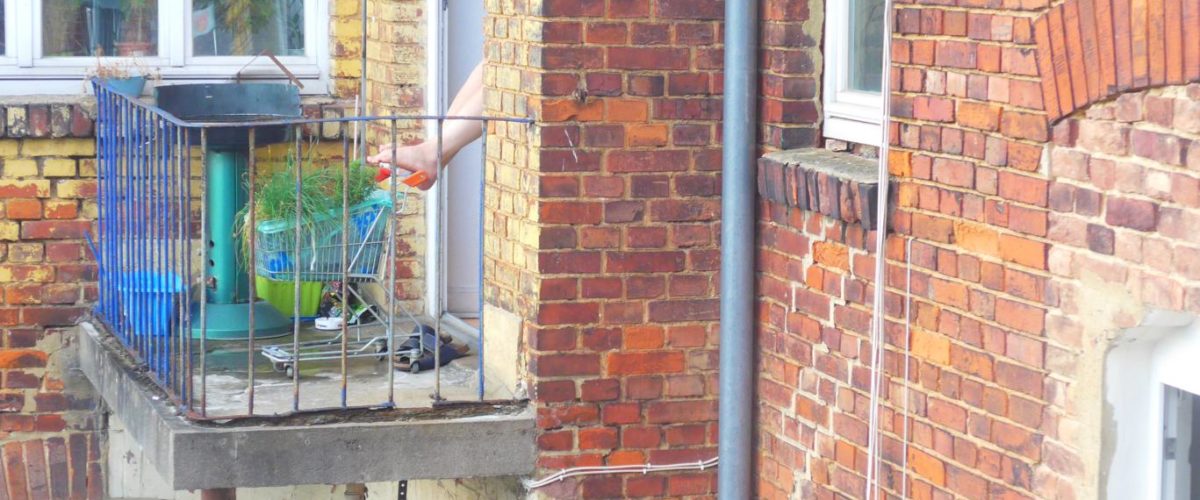
Sommer
Posted by admin On November 20, 2015
Und noch immer bin ich nicht in Argentinien angelangt.
Noch immer macht es mich ein wenig traurig, dass ich meine Photos verloren habe… also nein, eigentlich sehr sogar.
Egal! In Kurzfassung ein paar sehr wenige Bilder meines wundervollen Sommeraufenthaltes in diesem Deutschland.
Irgendwann war ich mit Lillith auf dem Open Flair
Danach habe ich mehrere Male mein Leipzig besucht, inklusive Berta, Lieblingsexmitbewohnerinnen, Dach und natuerlich haufenweiser rassistische Menschenmassen, jeden Montag wahlweise Mittwoch
Das Frequency Festival in Oesterreich habe ich mit Lisa, Pat, Joseph und VCA nicht ausgelassen. Kansas war auch dabei.
Ausserdem in Koeln ganz viel Familie besucht und leider sind auch davon viele Photos weg jetzt…
…aber dafuer habe ich noch die von meiner Herumfliegerei mit Carina (Deutschland, Mallorca – also ein Haufen Deutsche mit Palmen)! Jippie :)
Dann war ich auch mehrmals zwischendrin in Hamburg und lernte endlich mal den einzigen mir unbekannten Teil meiner Familie kennen! Das war sehr schoen… ausserdem gab es natuerlich wie immer viel Kunst zu sehen:
Anfang September heiratete meine Freundin Madeline in den USA ihren Chris und ich hatte die grosse Ehre von unserer Freundin Riki live dazugeskyped zu werden! Ich waere wahnsinnig gerne dabei gewesen…
aber war ich ja, zumindest auf dem Handy (erstes Bild)
Nach Berlin fahr ich freiwillig auch hin- und wieder. In Wirklichkeit mag ich es da ja, aber mehr als 4 Tage brauch ich trotzdem nicht. Dort nahm ich am PPP-Abschlussseminar Teil, das einem sagte, jetzt sei wirklich alles vorbei.
Dann geh doch nach Berlin!
In Dresden verbrachte ich nur 1,2 Tage und es war wunderschoen! Der erste „Familienurlaub“ seit bestimmt 5 Jahren.
Danach brauchte ich natuerlich mal wieder ein Festival als Ausgleich vor lauter Berlin und Natur.
Deshalb bin ich mit Luise nach Belgien gefahren, zu einem supersuessen winzigen musikalischen Festival von dem meine liebste Luise schoenerweise wusste. Da muessen wir wieder hin! Ausserdem haben wir es so gleich geschafft den besten Ex-Mitbewohner der Taeubchen zu besichtigen… und er sah gut aus!
Mal abgesehen von den ganzen anderen Sachen, die ich gemacht habe und die alle prima waren (warum fehlen mir so viele Photos?) war es ein sehr sehr schoener Abschluss fuer Papas 50. Geburtstag gekocht zu haben… und danach habe ich mich auch schon aufgemacht nach Flughafenhausen!
Zum Beispiel hat Chris, Karin und Kurts naechster PPPler nach Hannah, superviele tolle Bilder gemacht vom Geburtstag, mal abgesehen davon, dass es auch sehr schoen war, ein wenig Zeit mit ihm verbringen zu koennen!
Und schon wisst ihr noch immer ueberhaupt nichts ueber Buenos Aires, ausser dass ich wohl angekommen bin und Strom habe! Stimmt zumindest beides…
Nochmal von vorne
Posted by admin On November 11, 2015
Halle liebe Leute,
ich habe beschlossen wieder oder immernoch ein bisschen fuer euch zu schreiben.
Leider aergerlicherweise ist das so, dass meine bisherigen Photos leider verloren gegangen sind und ich darum nur schaebige Handybilder fuer euch zur Verfuegung habe.
Trotzdem fange ich dann mal an euch ein bisschen zu erzaehlen.
Und zwar von ganz vorne. Mir ist naemlich aufgefallen, dass nicht einmal ich mir bis jetzt die Bilder meines Roadtrips aus den USA angesehen habe, deshalb gebe ich mal zumindest eine zusammengefasste Zusammenfassung des Reisemonats Juli… es erinnert sich bestimmt niemand an die Reihenfolge, nicht einmal ich. Aber dafuer gibts ja noch Lara Under Sunflowers, das kopiere ich doch einfach mal froehlich:
Grand Canyon (Horseshoe, Antelope Canyon, Grand Canyon, Flagstaff)
Phoenix
San Diego
Los Angeles –> hier gaben wir das Auto ab, Anna und Lisa flogen nach Hawaii und ich reiste mit dem Bus alleine nach:
Napa, San Francisco–> um in einem Sternerestaurant des beruehmten Thomas Keller zu stagen und danach dann endlich nach:
San Francisco!!! Wohoo! Von dort aus flog ich nach:
Minneapolis, um Hannah zu besuchen, die bei Karin und Kurt gewohnt hat und Chris (der naechste PPPler) durfte ich auch schon kennenlernen. Jipipie!
Kansas City, um wirklich richtig echt tschuess gesagt zu haben… und dann kam:
Canada! Ottawa gefolgt von
Washington D.C., Abschlussseminar
die Bildergallerietradition bleibt erhalten!
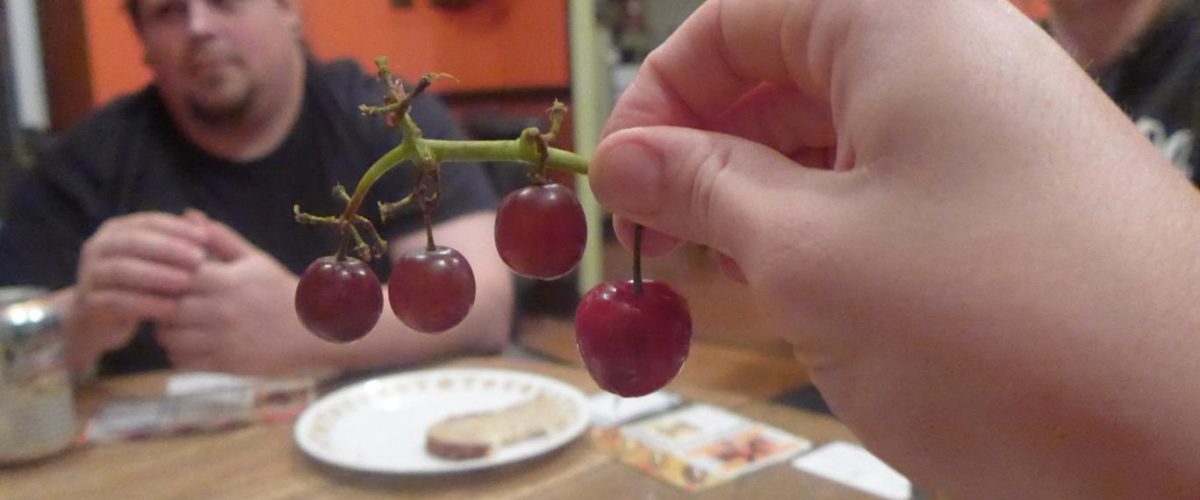
Hello Again!
Posted by admin On November 1, 2015
Und da ist sie wieder!
Diesmal live aus Buenos Aires, Argentinien, Südamerika, Welt! ;)
